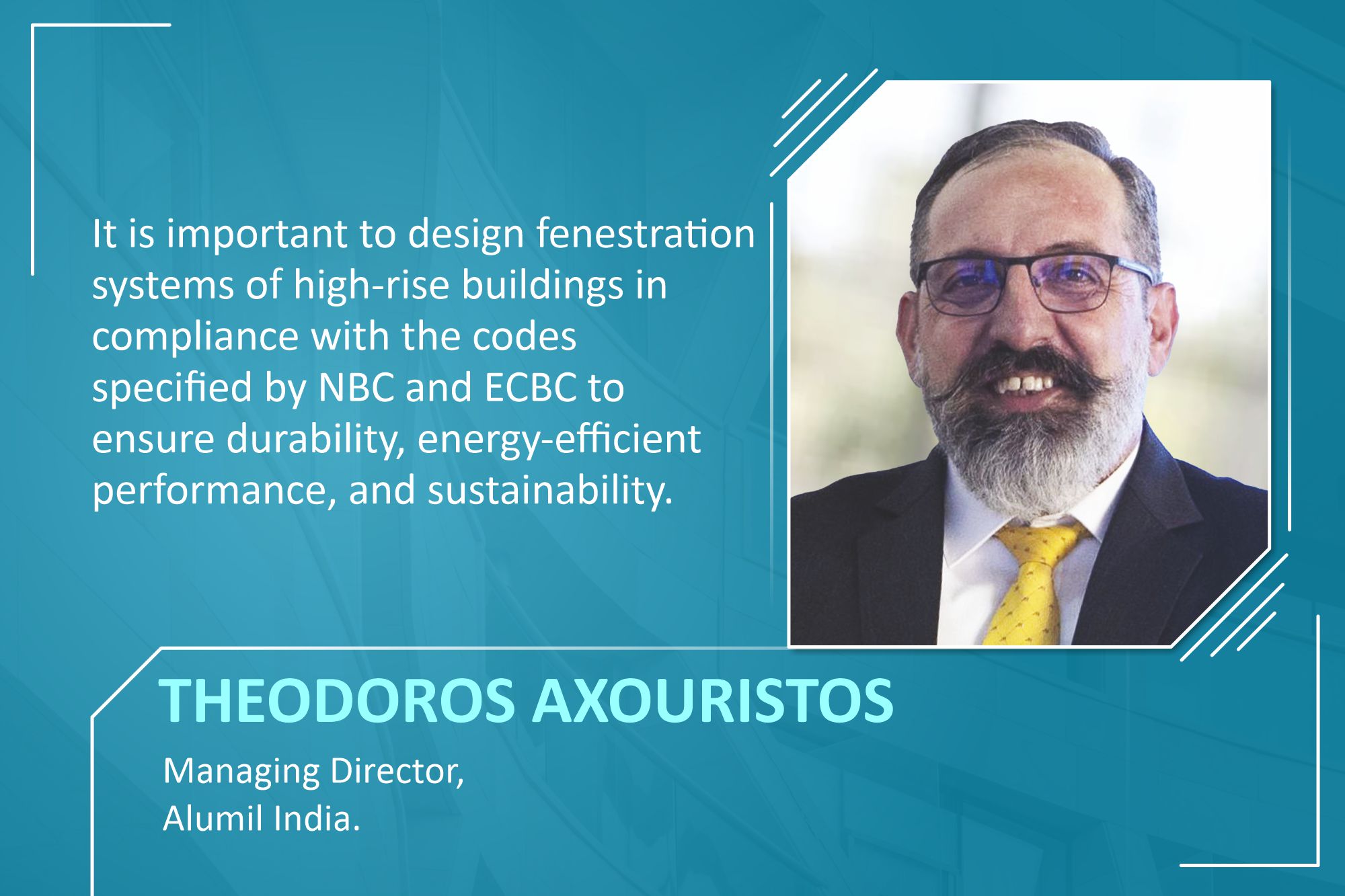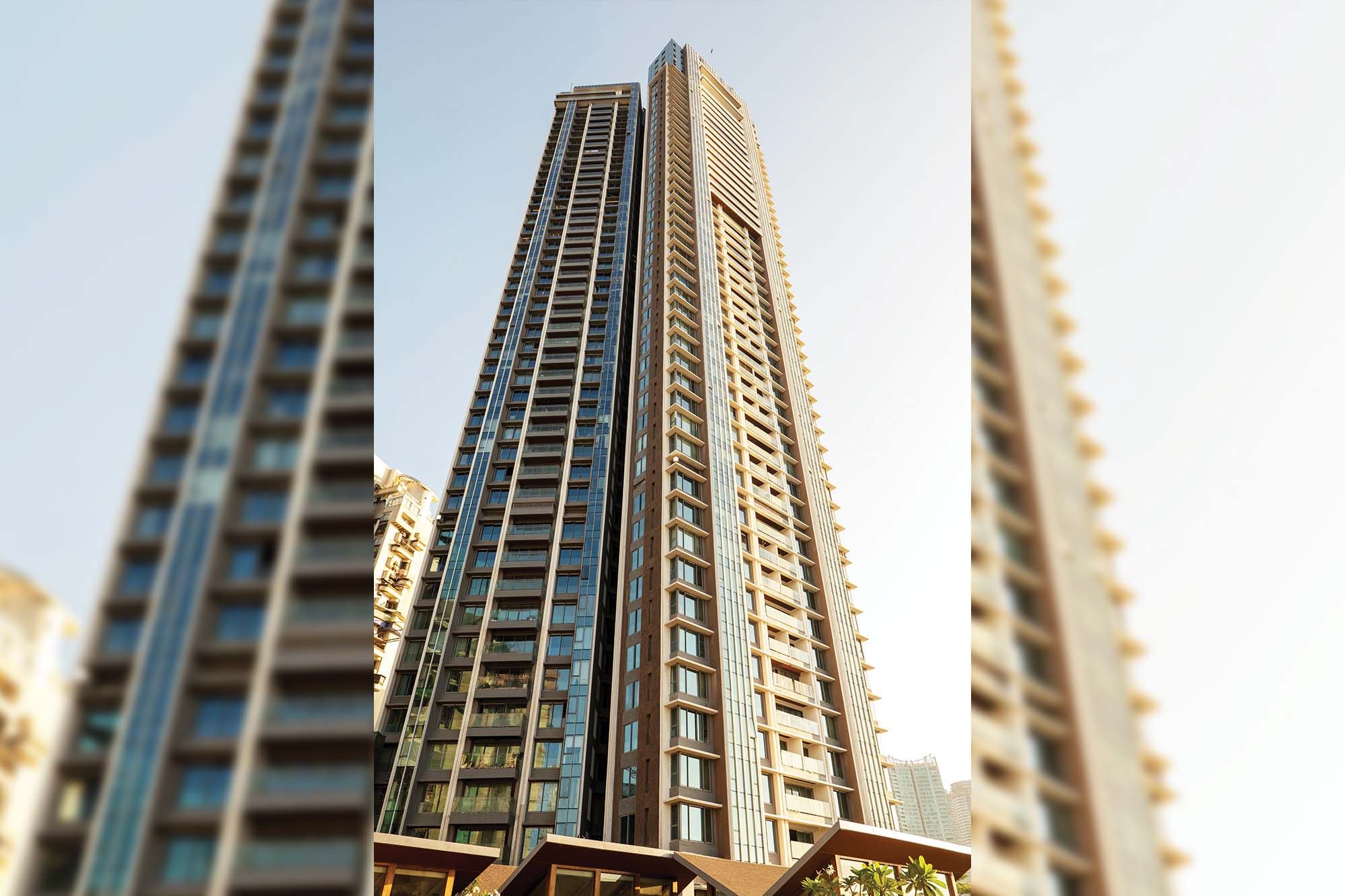Fenestration trends for energy-efficient high-rises

This interaction details the codes, latest trends, and sustainability goals to consider while designing fenestration solutions for high-rise buildings in India. The discussion also highlights how prefabrication technology has enhanced the quality of fenestration solutions for high rises.
Can you highlight the fenestration requirements for high-rise buildings in India?
In India, fenestration requirements for high-rise buildings are directed by several guidelines. Aspects such as safety, structural integrity, and energy efficiency are to be adhered to according to India’s National Building Code (NBC). The standards for energy performance, promoting the use of energy-efficient glazing, shading devices, and appropriate window-to-wall ratios are set by the Energy Conservation Building Code (ECBC). Since India has diverse climatic zones, the fenestration solution should correspond to the appropriate zone. For example, reflective glazing and shading devices are recommended in hotter regions, while cooler areas may benefit from higher solar gain. Similarly, fenestration systems in high rises should be tested and certified for wind pressure resistance, ensuring they remain functional and safe under adverse conditions. It is also important to ensure compliance with safety standards, including emergency egress and fall protection provisions and acoustic insulation. Given the height of high rises, fenestration systems must be durable and designed for easy maintenance. Using recycled materials and designs that optimise natural light should be promoted to ensure sustainability.
Can you walk us through the recent fenestration trends in India? What are your recommended fenestration systems for the Indian climate?
Recent fenestration trends in India reflect a growing emphasis on energy efficiency, sustainability, and innovative design. There is an increased usage of sustainable materials, such as recycled aluminium and eco-friendly composites. Smart glass technology is on the rise, allowing windows to adjust their tint in response to sunlight, enhancing occupant comfort. Natural ventilation is being prioritised, with operable windows designed to enhance airflow to facilitate cross-ventilation. The window-to-wall ratio is being optimised to balance natural light with thermal performance. Soundproof fenestration solutions are on the rise in urban areas with high noise levels. Other design aspects include larger window formats, frameless glass facades, sliding systems, and unique geometric shapes, enhancing the architectural appeal of buildings.
Alumil has introduced “Loop 80,” a certified aluminium product, as a raw material. It contains 80 percent recycled material and can be made available to high-specification projects seeking international sustainability certifications like LEED and BREEAM. The upgrade ensures an 87 percent reduction in CO2 emissions compared to the carbon footprint of using aluminium.

What are some of the latest recommendations in fenestration that focus on enhancing energy efficiency in high-rise buildings?
Some of the latest recommendations include thermal break systems in aluminium windows. These systems reduce heating and cooling costs, improving overall energy efficiency. Since aluminium is resistant to corrosion and weathering, it ensures longevity, allowing various finishes and colours to match architectural styles.
How has the “prefabrication” technology enhanced the quality of fenestration solutions, especially in high-rise buildings?
Prefabrication technology has significantly enhanced the quality of fenestration solutions in high-rise buildings in India by improving efficiency, precision, and overall performance. The technique allows for better quality control since it occurs in controlled factory settings, consistency, reduced installation time, enhanced precision, and room for customisation with tailored solutions and various designs. Prefabrication minimises on-site waste, as materials are cut and assembled in a controlled environment, contributing to sustainability goals. They incorporate energy-efficient features more effectively, such as high-performance glazing and thermal breaks. In addition, prefabricated fenestration products can be rigorously tested in a factory setting to meet local building codes and energy efficiency standards. The technique also minimises safety risks associated with construction activities at height.
For more details, visit: https://www.alumil.com/international/corporate/careers/careers-@-alumil/india
Cookie Consent
We use cookies to personalize your experience. By continuing to visit this website you agree to our Terms & Conditions, Privacy Policy and Cookie Policy.










